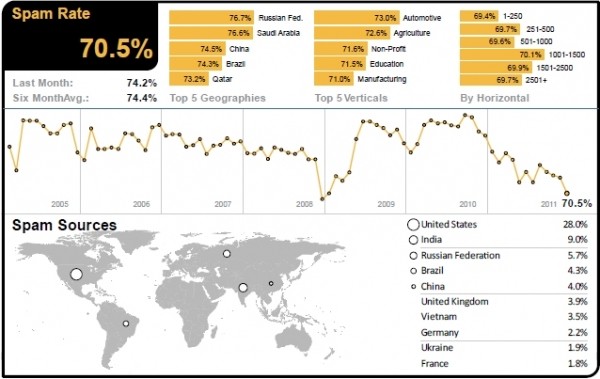E-mail spam across the world is close to a three-year low, now accounting for 70.5 percent of all messages sent. That may sound like a lot until you consider that 90 percent of e-mail sent in 2009 was spam, according to Symantec's November Intelligence Report.
The 25 page report also highlights that one in 302 e-mails was identified as a phishing attempt and one in 255.8 messages contained malware. Most alarming, however, is that nearly 5,000 malicious websites are blocked each day, an increase of 47.8 percent since October 2011.
Symantec reports that Russia was the most spammed region in November at 76.7 percent, followed closely by Saudi Arabia at 76.6 percent and China at 74.5 percent. The US had a 69.9 percent spam rate while Canada was slightly better at 69.5 percent.

Spam in general is on the decline but the same can't be said for targeted attacks. As the name suggests, these attacks are sent to specific individuals within an organization with the initial goal of infecting and spreading to other systems on the network. The attacks use a variety of attack vectors, exploiting unpatched vulnerabilities over a long period of time. Once infiltrated, these attacks attempt to grant remote access to confidential data.
The top targets for these types of attacks include the government / public sector with 20.5 attacks per day and chemical / pharmaceutical industries who were targeted on average 18.6 times daily. Manufacturing and finance were key targets as well, attracting 13.6 and 11.8 attacks daily, respectively.